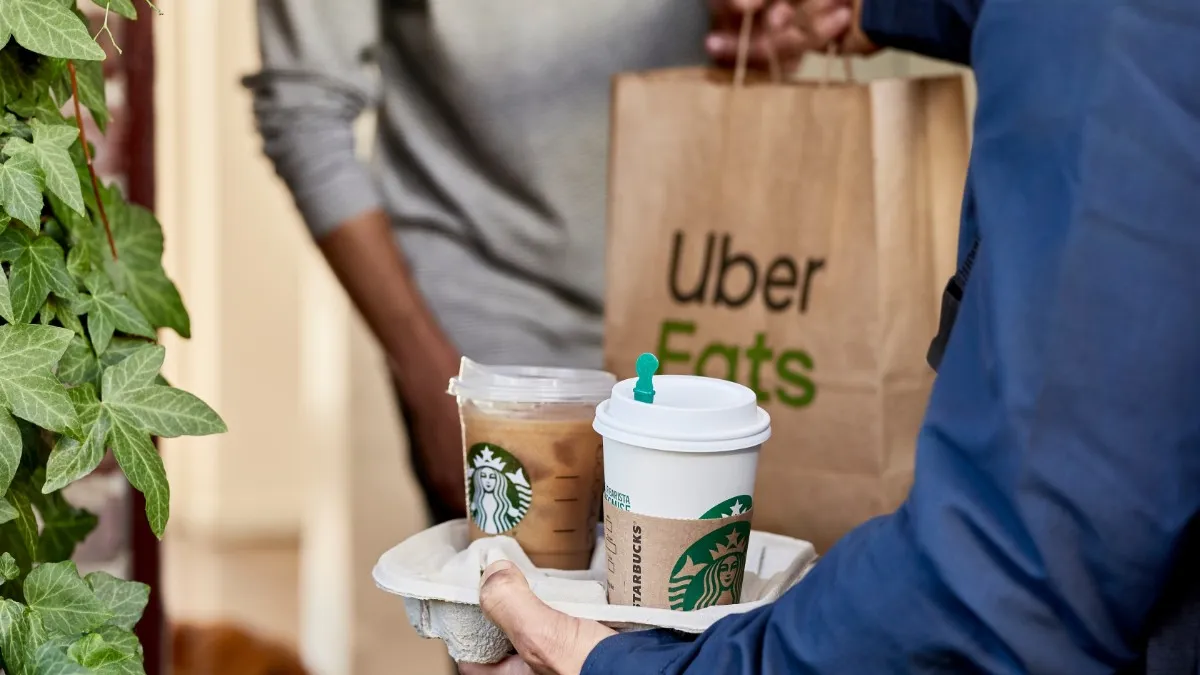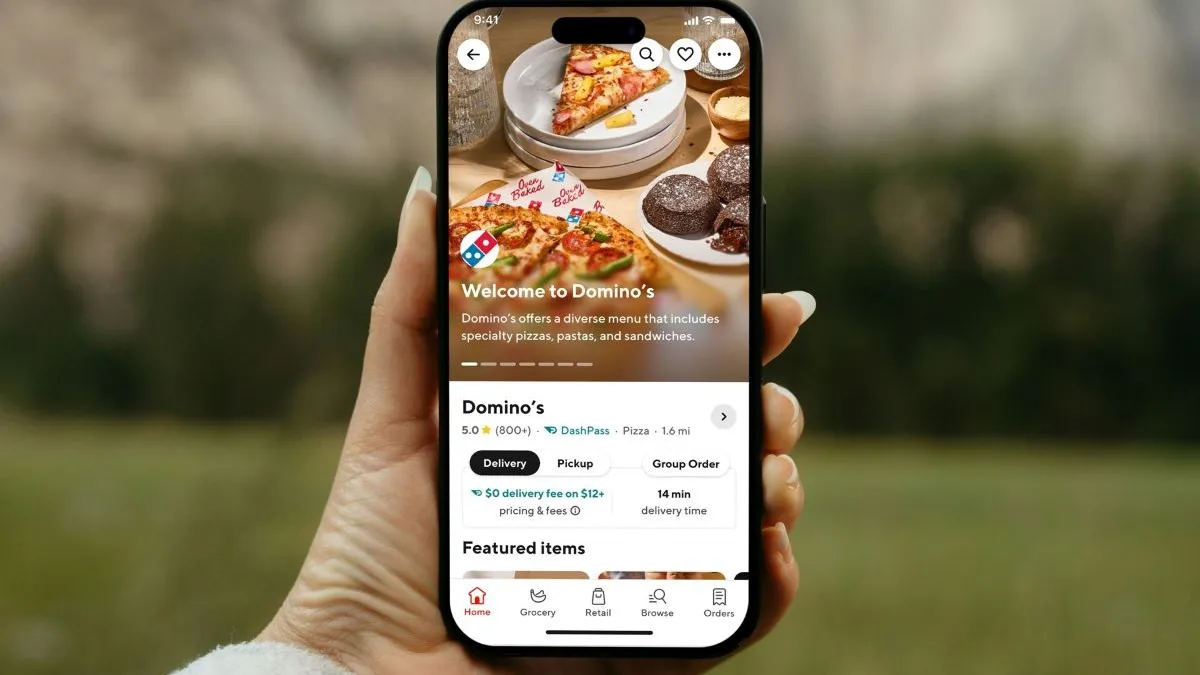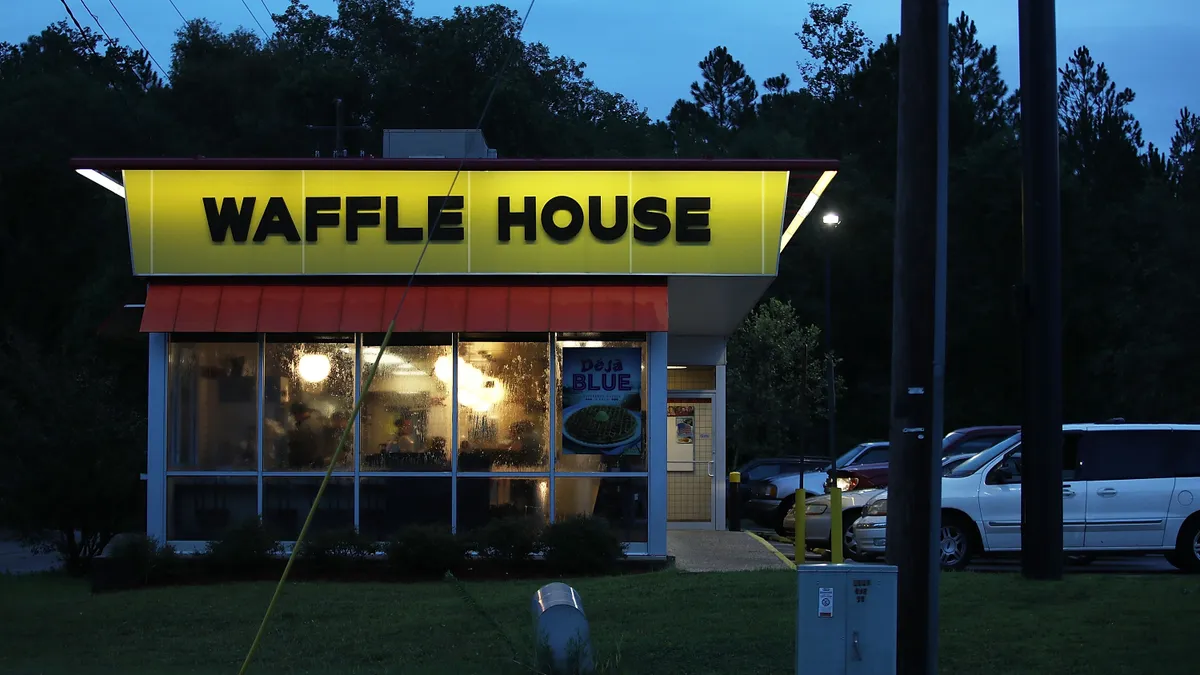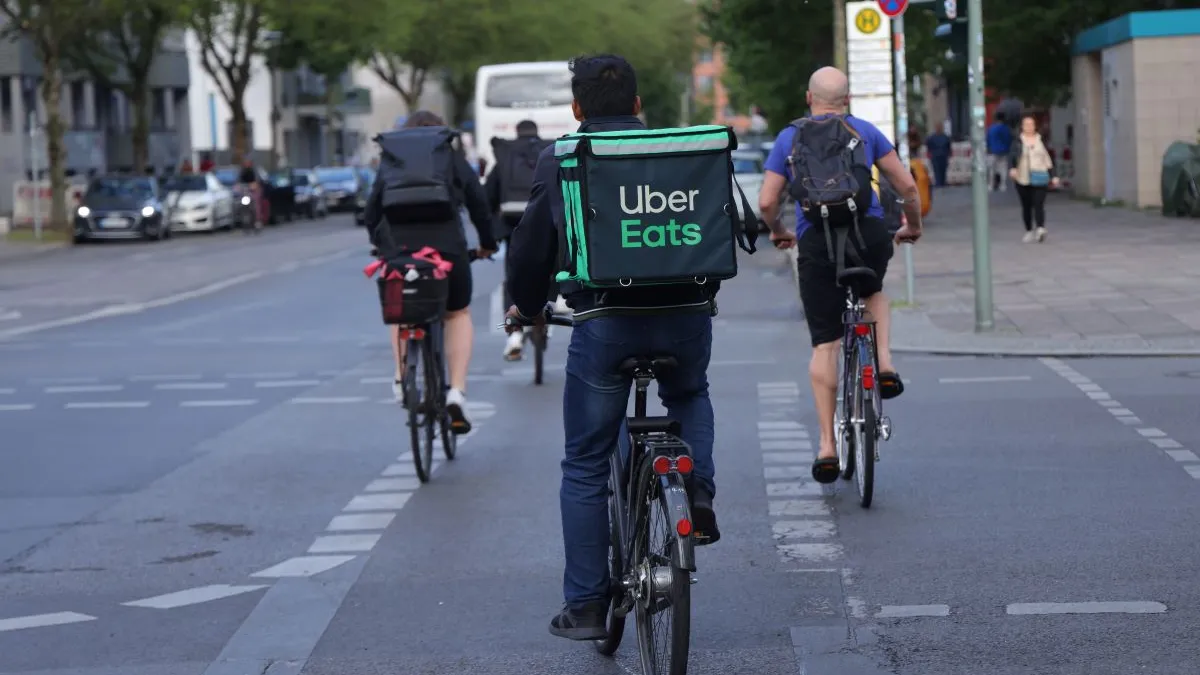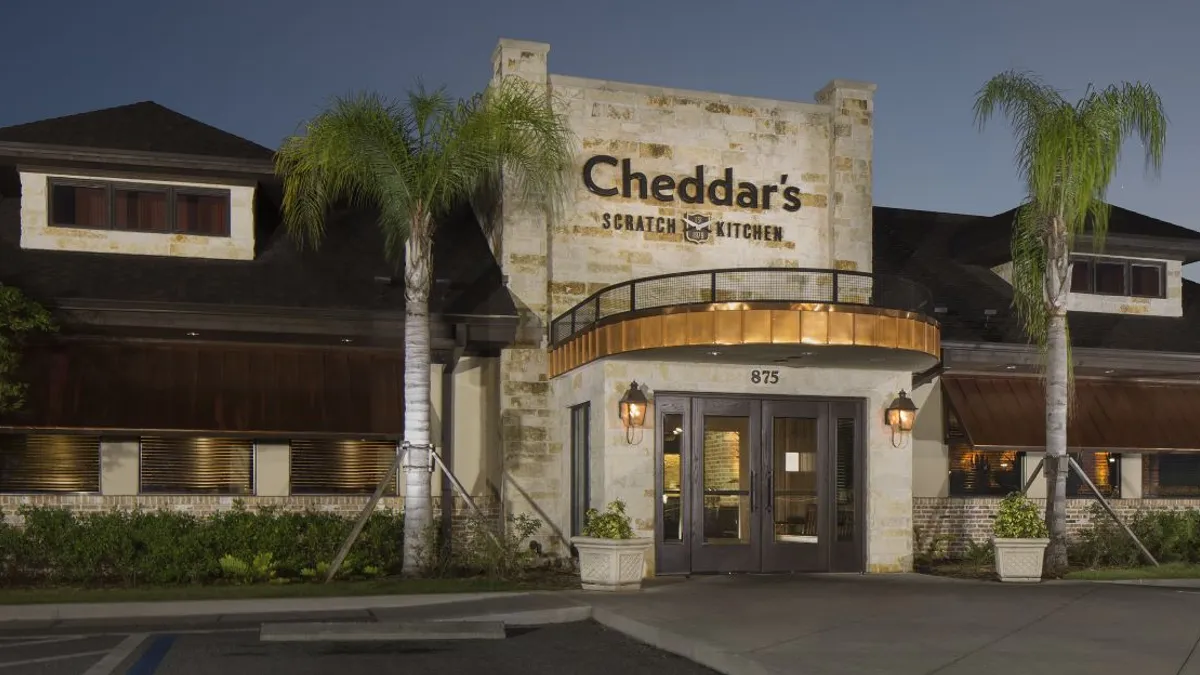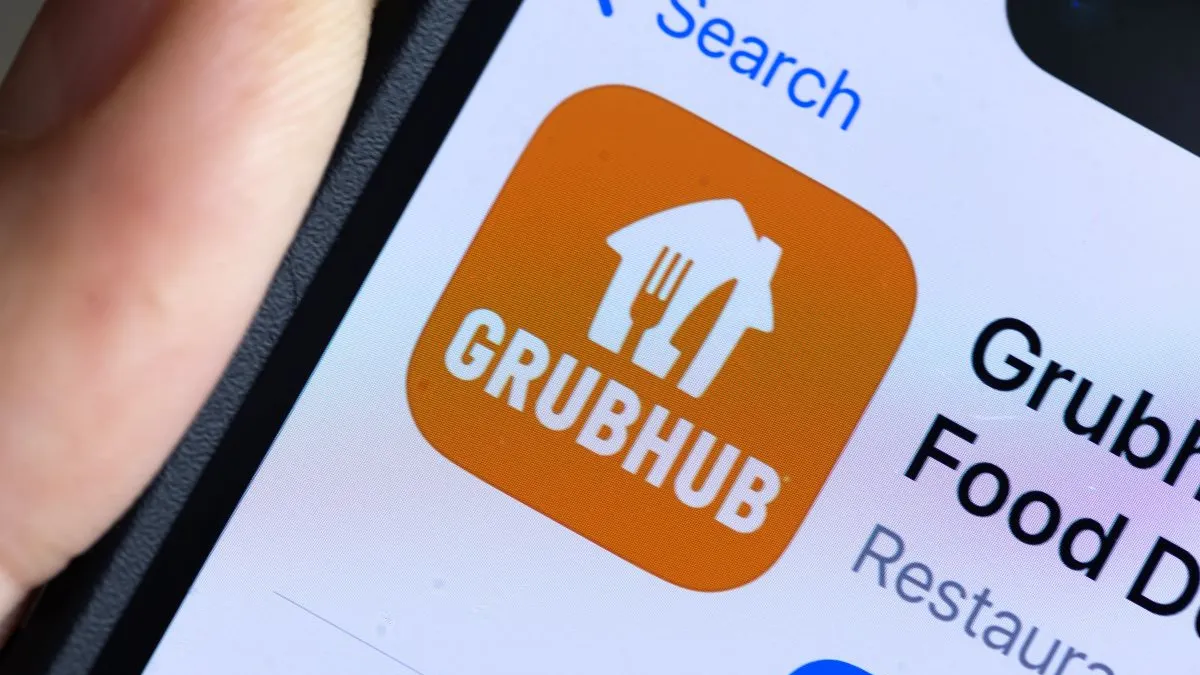UPDATE: June 4, 2019: This article has been updated to include off-premise and delivery initiatives from Cracker Barrel and Red Robin, which were outlined in recent earnings calls with investors.
From Starbucks rolling out delivery via Uber Eats across the country to Chipotle focusing on promotions to increase delivery awareness, restaurant brands continue to expand their delivery and off-premise capabilities alongside growing consumer demand. Restaurants continue to see incremental sales and same-store sales growing as off-premise makes up a larger piece of the pie.
Catch up on their updates here:
Cracker Barrel
The casual dining chain’s off-premise business increased more than 15% during Q3 fiscal year 2019 compared to the prior year’s quarter, Cracker Barrel SVP and CFO Jill Golder told investors during a June earnings call.
The restaurant has been growing its third-party delivery footprint and reached nearly 350 locations during the quarter, president and CEO Sandra Cochran said. The company also plans to add more than 100 stores by the end of the fiscal year. It currently works with DoorDash, but has plans to add two additional vendors to increase its coverage.
The restaurant recently launched a Picnic Box menu item, which offers a family-sized option with 12 pieces of chicken, two quarts of sides and biscuits and cornbread. Cochran expects this menu item will play an important role in off-premise and catering initiatives.
Red Robin
Red Robin’s off-premise business makes up 11.6% of total revenue and grew 20.6% year-over-year at the end of the first quarter, interim CEO Pattye Moore told investors during the Q1 earnings call. The company plans to focus on improving its to-go experience by implementing revamped operational processes and tools and will increase its delivery reach with third-party partners.
Lynn Schweinfurth told investors that the company expects third-party delivery to increase due to additional organic growth, thanks to more restaurants offering delivery and additional service partners.
Catering represents 1.2% of the company’s sales during the first quarter and grew 220% compared to last year, she said. The company enhanced its catering team in 2018 and plans to continue to enhance the sales team and build both local and national accounts, Moore said.
Jack in the Box
Delivery continued to contribute to sales during Q2 fiscal year 2019 and sales mix grew 60 basis points during the quarter, chairman and CEO Leonard Comma said during the company’s Q2 fiscal year 2019 earnings call with investors. Average checks are consistently higher than other dining modes and most delivery orders have been placed during dinner and the late-night daypart. More restaurants started supporting delivery during the second quarter and nearly 90% of its system works with at least one delivery provider.
Guests have also been increasingly using the company’s new mobile app, which launched during the first quarter. Adoption continues to increase and mobile transactions nearly doubled during the second quarter.
FAT Brands
Delivery continues to be a focus across the company’s multiple brands and has been successful so far, FAT Brands president and CEO Andy Wiederhorn told investors during the company’s Q1 2019 earnings call.
“We were a pioneer partner in the delivery space testing all kinds of programs with Postmates and Uber Eats and we believe we are still in the beginning stages of delivery’s potential,” Wiederhorn said.
The service has been rolling out across Fatburger restaurants and it is mid-stream in the company’s implementation of delivery at its other brands.
Noodles & Company
Off-premise sales grew by 56% of sales during the first quarter, 500 basis points more than the year-ago quarter, CEO Dave Boennighausen said during a Q1 2019 earnings call. Digital ordering, including delivery, grew 63% during the quarter compared to the previous year’s first quarter. It makes up 22% of total sales.
Delivery made up 5% of sales during Q1 2019 compared to 3.1% of sales during the fourth quarter of 2018. While delivery is helping the company build sales, it has also increased costs, and the company is testing a select pricing strategy to mitigate the impact of delivery on margins.
While digital ordering and delivery is growing, about 30% of people are still going into the restaurant, ordering and waiting for to-go orders, which is “just not ideal,” Boennighausen said. The company expects its new app will make it easier for people to order online.
“I feel that there is tremendous opportunity just to optimize the experience for that guest that’s currently waiting in line,” he said.
The company also believes that it can increase its catering operations, which account for about 2% of sales. The company plans to relaunch its catering program closer to 2020 and expects it to better deliver long-term growth.
Wendy's
Wendy’s has grown its delivery platform 15% since the end of 2018 to cover 75% of its North American restaurants, president and CEO Todd Penegor said during a Q1 2019 earnings call with investors. The company expects to reach 80% of its North American system by the end of 2019. It also is integrating delivery into its mobile apps a process that is expected to be completed by the end of the year and will not only provide a more seamless customer experience, but also provide the company with more insights to enhance customer relationships and improve delivery times, he said.
Awareness is key for growing delivery, Penegor said, and the company ran several promotions during the quarter to help increase delivery sales.The company expects to drive awareness throughout the year within its own app as well as within its delivery partners’ apps. The company works with DoorDash in the U.S. and SkiptheDishes in Canada.
Mobile ordering is now available to 75% of its U.S. system and is expected to be activated across its entire North American system by the end of 2019, he said.
Potbelly
Off-premise, which includes catering, pickup and delivery, grew to 21% of comparable sales during the first quarter of 2019 compared to 17.5% during the first quarter of 2018, president and CEO Alan Johnson said during the company’s Q1 2019 earnings call with investors.
Pickup is the fastest growing segments for the company and it is rolling out pickup racks, which will be available by the end of the third quarter, Johnson said. Delivery also accelerated during the first quarter as shops continued to augment driver delivery with DoorDash.
Wingstop
While delivery has nearly reached half of its stores and could reach 80% of stores by the end of the year, it has yet to significantly drive comp sales growth, chairman and CEO Charles Morrison said during a Q1 2019 earnings call with investors. Delivery is on track and is consistent in a sales mix and growth rate that was reported on during the testing phase, he said. He does expect an increase in performance during the last half of the year.
Currently, two-thirds of its delivery orders come through the Wingstop app and one-third from DoorDash, but Morrison said he expects that to shift toward 50/50 once DoorDash pushes more media out advertising its partnership.
Digital sales overall made up 30% of sales during the first quarter, a 640 basis point increase compared to the first quarter of 2018, Morrison said. Wingstop launched a consumer-facing website and app at the start of the first quarter and has already seen a 3% improvement in guests visiting its digital properties and converting to an order. He said as delivery continues to rollout, he expects digital sales to accelerate since delivery is all digital.
Del Taco
Delivery via Grubhub reached nearly all of its company-owned locations during the first quarter, and the restaurant plans to add Postmates and DoorDash later this year, president and CEO John Cappasola told investors during a Q1 2019 earning call. Delivery is still in its early days, and executive vice president and CFO Stven Brake said it’s still too soon to see a material impact on sales.
Fiesta Restaurant Group
Delivery via DoorDash was rolled out to more Taco Cabana restaurants in Houston, Dallas and El Paso in March. Its partnership with DoorDash is gaining momentum across both Taco Cabana and Pollo Tropical and is receiving positive feedback into the second quarter, Fiesta Restaurant Group CEO and president Richard Stockinger told investors during a Q1 2019 earnings call.
Third-party delivery makes up about 2% to 2.5% of sales at Pollo Tropical and even less for Taco Cabana, but Stockinger expects that there is potential to reach 10% to 15% of sales similar to competitors. Even though delivery costs have impacted margins negatively, Stockinger said delivery is necessary.
"I still believe that especially with the millennials this is what you have to do. This is part of their lifestyle," Stockinger said. "So if you want to operate in this arena, you have to play the game."
The restaurant group is also expanding its catering capabilities with plans to expand catering to its entire Taco Cabana system and investing in new delivery vehicles, Stockinger said. The company also rebranded its catering program and messaging for Pollo Tropical to better appeal as a business-to-business and business-to-consumer option. It also invested in equipment to support catering and is introducing a ghost kitchen in Miami-Dade, Stockinger said.
Chuy's
Delivery continues to gain traction among customers with awareness and engagement increasing during the first quarter, president and CEO Steve Hislop said during a May earnings call with investors. Delivery contributes 2.7% of sales and off-premise makes up a total of 13.6% of sales.
The company’s adoption rate of online ordering has increased despite a lack of advertising. Sales via Olo now represent 13% to 15% of all to-go ordering, he said. In May, the company began promoting its online ordering, which is expected to drive further awareness.
The brand also views catering as an important part of its off-premise strategy and during the second quarter it will roll out the service to two additional markets, bringing it to a total of 11 markets, Hislop said.
Dunkin' Brands
Dunkin's delivery test with Grubhub is performing to its expectations and the company has expanded the program to additional locations, CEO Dave Hoffman told investors during a May earnings call. The company expects to quickly scale it to a larger test in the near future, he said. Even though it was already delivering with DoorDash and will continue to do so, the company launched a test with Grubhub to look into POS integration earlier this year.
Yum Brands
CEO Greg Creed told investors on a May earnings call that the company is excited about its recent off-premise developments, including a partnership with Grubhub for click-and-collect. More than 2,000 KFC locations now offer delivery, and 3,200 stores are available for click-and-collect through the third-party platform.
Pizza Hut’s U.S. footprint now offers delivery from more than 200 locations through Grubhub, with the restaurant’s delivery drivers completing the orders. Taco Bell also launched delivery in February, with around 4,000 locations offering the service. It offers click-and-collect on its website and app and expects to add this function to Grubhub.
Creed said that Pizza Hut’s dine-in sales growth is lagging seven points behind off-premise, and that delivery times are improving. Still, third-party delivery growth is proving to be an obstacle.
“There’s obviously a negative impact but it’s hard to measure what the cannibalization effect is of aggregators on Pizza Hut in the pizza category,” Creed told investors. “So, yes, a little bit of negative impact but I see this whole opportunity of growth and delivery to be an upside for us not a negative.”
Dine Brands
Applebee’s president John Cywinski told investors during its Q1 earnings call that the chain now offers some form of delivery at about 1,200 locations, and plans to ramp up the offering to nearly 1,500 restaurants by year’s end. Stores use a mix of Applebee’s own last-mile delivery through its website as well delivery through third-party partners.
IHOP president Darren Rebelez said its off-premise sales growth for the quarter was driven by a strong increase in comp traffic, and that the chain now has close to 1,200 restaurants offering delivery through DoorDash and another 1,250 working with at least one delivery service provider. Off-premise sales at both brands were primarily driven by online engagement, according to the earnings release.
Habit Burger
Habit Burger finished its rollout of its Postmates partnership to 225 restaurants by the end of the quarter to complement its systemwide rollout of DoorDash, president and CEO Russ Bendel told investors during the company’s Q1 2019 earnings call. Delivery continues to average higher checks compared to dine in and carry-out business, he said.
Delivery has grown each quarter and is becoming an important part of the restaurant’s business, Bendel said.
The company plans to roll out an app during the third quarter that will help the company grow its online ordering sales channel, Bendel said. The app is currently being tested at 30 stores in three different markets. During the first quarter, sales for online and web orders were up 23.7%.
The Cheesecake Factory
Marketing campaigns continue to be an effective way for The Cheesecake Factory to grow awareness over its partnership with DoorDash. Its April Fools’ Day campaign where 10,000 people recieved $25 of free delivery sold out within eight minutes, The Cheesecake Factory president David Gordon told investors during a Q1 2019 earnings call.
“We believe these efforts will continue to contribute to comp store sales growth moving forward,” Gordon said.
While checks have been higher for delivery, dessert sales also have been impacted by delivery. For delivery dessert sales are closer to 20% compared to in restaurants where those sales make up 17% to 17.5%, Gordon said.
Off-premise made up 16% of sales during the quarter while online ordering reached 13% of sales, compared to about 11% in previous quarters, CFO Matthew Clark told investors. Delivery made up 30% of the digital sales during the quarter.
McDonald’s
The fast food giant reported that delivery is now available at more than 20,000 restaurants across more than 75 countries, or over half of McDonald’s global footprint, CEO Steve Easterbrook said in an earnings call. He also said delivery has grown to a $3 billion business worldwide for both McDonald’s corporate and franchise restaurants.
CFO Kevin Ozan said that delivery had a slower start in the U.S. compared to more mature international markets including the U.K., Australia and France, but that domestic delivery still made a small contribution to the comp last year.
The company confirmed it is working with Uber Eats, which it entered an exclusive partnership with last year, to create as competitive a deal as possible that will help restaurant operators. Average delivery checks are 1.5 to two times that of its in-restaurant average check.
“... in the U.S. the actual guest counts per restaurant per day [are] still some way [sic] behind elsewhere in the world but we’re confident that we’re going to more rapidly pick up the pace,” Ozan said.
CEO Steve Easterbrook also said that McDonald’s hopes to give U.S. customers access to delivery through its mobile app during Q3 2019.
Denny’s
CEO John Miller told investors during an April earnings call that Denny’s grew its delivery footprint from about 71% of its system to 79% by the end of the quarter. He also said that the number of locations eligible for delivery grew from approximately 77% to 89% by the close of the period. Delivery transactions deliver margin rates between the low teens and upper 20% range for the company.
Brinker International
Off-premise business continues to be a solid driver for both Maggiano’s and Chili’s during the first quarter of the year with this segment up 17% for both brands, Brinker CEO and president Wyman Roberts said during a first quarter call with investors in April.
Maggiano’s, which has already been offering delivery for a decade, has posted double-digit growth in delivery through its third-party delivery partnerships. While the company has been reticent about adding delivery to Chili’s, it is closer to finding a partner, Roberts said.
“We’ve never doubted the potential of delivery,” Roberts said. “It’s just always been, okay, how does this work in our restaurants and how do we make some money off that as well, and we’re starting to overcome some of those hurdles.”
As delivery companies have built scale nationally, that has made third-party delivery more worthwhile, especially in suburban markets where its restaurants are located, said Brinker CFO and senior vice president Joseph Taylor. Better POS integration also is becoming a pertinent discussion as the company works to establish delivery partnerships for Chili’s, said Roberts. That may mean using a white label offering that works with its existing technology at some point in the future, Taylor said
“Now that our foundational business is strong, we're committed to figuring out a delivery program that integrates with our system and deliver[s] the high-quality experience to our guests just as they're experiencing inside the restaurants and with take-out,” Roberts said.
Restaurant Brands International
Nearly half of RBI’s U.S. restaurants now offer delivery, CEO Jose Cil told investors during an earnings call. The parent company has brought delivery to nearly 1,300 U.S. Popeyes locations compared to almost none at the beginning of last year, Cil said. Earlier this month, the fried chicken chain officially teamed with Postmates for delivery.
“We believe there is still an immense runway to grow delivery, both in restaurants that already offer it and by expanding the number of restaurants participating…We are currently working with our franchisees to ensure delivery capabilities are fully integrated with our new POS systems, which will simplify the processing of orders from third-party delivery aggregators,” Cil said on the call.
Bloomin' Brands
Delivery is now available in more than 550 locations across Bloomin’s Outback and Carraba’s brands, CEO Dave Deno said during an April call with investors. He also noted that these stores are outperforming delivery time benchmarks. To drive more diner awareness, Deno said the company will ramp up marketing efforts.
According to analysts, the average delivery check sizes are still lower than what diners pay in store, with customers shelling out an average of $27 on takeout order, $42 for delivery and $54 in the restaurant, Skift Table reports.
“One of the advantages of having your own delivery network is that you have the ability to tweak the operating model as you see fit. We can make changes. They can enhance profitability and enhance the experience for our guests. That is one of the advantages we have without having our own drivers,” CFO Chris Meyer said on the call.
Off-premise made up 14% of the total sales at Outback and Carraba’s for its first quarter 2019, Meyer said.
Starbucks
After expanding its partnership with Uber Eats in December, the coffee chain rolled out its Starbucks Delivers program to 1,600 stores in seven major U.S. markets during Q2 fiscal year 2019, Starbucks president and CEO Kevin Johnson told investors during an earnings call. While it is still in its early days, the primary focus of this expansion is customer awareness that ends up leading to trial and adoption of the service, he said.
BJ's Restaurant
The casual dining chain's off-premise business reached an all-time high during Q1 2019, making up 10.1% of sales, CEO Greg Trojan said during an April conference call with investors. When it first ventured into off-premise several years ago, this portion made up 5% of the business. Trojan said since many others in the space have reached 15% of sales from off-premise, that he believes it’s possible for BJ's to achieve similar levels over the next few years.
To reach that goal, the company has been focused on growing large party and off-premise catering, he said. These areas are opportunities to add a new guest occasion and category while also growing average check and profitability, he said. The launch of a large party channel in June is expected to help deliver a boost to off-premise sales during the later half of the year.
While BJ's third-party delivery strategy has remained the same, it has gained a better understanding of what has worked and not worked in driving traffic. Trojan said he believes that the company is collaborating and joint marketing much more effectively.
The restaurant is also considering third-party delivery in alcohol and product offerings, where permitted geographically, to help drive higher off-premise checks, which have been smaller than dine-in checks, Trojan said.
Chipotle
Delivery is a key driver to the fast casual chain's digital growth, CEO Brian Niccol said during an earnings conference call with investors in April. Chief Financial Officer Jack Hartung said it is the fastest growing part of the business and has high incrementality. The company has been rolling out second make lines to better process digital orders, including delivery, and adding pickup shelves to make it easier for drivers and customers to grab their meals.
Niccol credited the success of delivery to the fact that the restaurant's food travels well and the company has made it easy to order on its app or online.
The addition of pickup shelves is expected to improve delivery times, which are currently under 30 minutes, since drivers can just go in and pick up the appropriate order and leave without having to wait, Niccol said.
"There's literally no wasted time in the process," he said.
It's also had success with its delivery promotions. A free delivery bowl promotion, which ran from Dec. 17 to Jan. 7, helped attract new and inactive users, and the company is seeing an increase in customer retention with higher delivery sales since the promotion, Niccol said.




